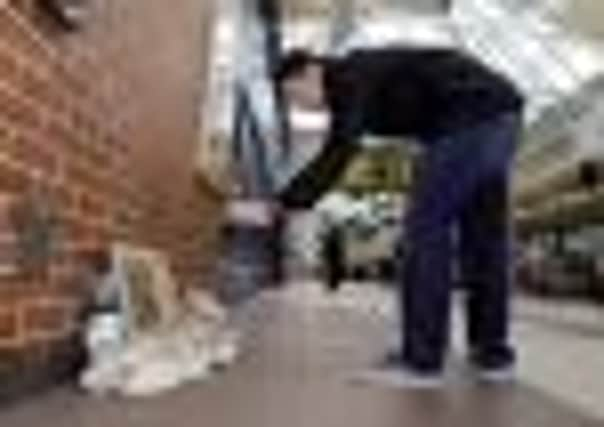Charity finds new way of making connection with donors


Some take the view that it pays to raise the profile of a good cause and with greater awareness comes greater donations. Those behind the Leeds-based homeless charity Simon on the Streets understand the argument, but have always taken the view that any money they receive should be spent directly on providing services; advertising, they have always reckoned, is a luxury they simply can’t afford.
“I know the fact we don’t spend money on advertising probably comes as a surprise to anyone who has seen our large billboard in Leeds city centre,” says Clive Sandle. “But both the billboard and the poster artwork were given to us for free, we couldn’t have done it any other way.
Advertisement
Hide AdAdvertisement
Hide Ad“For large charities with more guaranteed income streams advertising probably makes sense, but for us spending thousands of pounds on a campaign when you simply don’t know how much revenue it will generate is a risk we just can’t take.”
The last two years have brought mixed fortunes for many charities. While the falling property market has had a major impact on the value of charitable legacies, a report out today shows that despite the economic gloom Britain is, in fact, more generous than it was this time 12 months ago.
According to research carried out by the Charities Aid Foundation, Britain now ranks at number five on the World Giving Index, three places higher than last year. However, the pot of money available is finite and many organisations are now looking at increasingly inventive ways to tap into it.
For charities like Simon on the Streets that means accepting traditional forms of fundraising may not necessarily be the best. Teaming up with the creative agency Propaganda, resulted yesterday in a series of installations across Leeds city centre.
Advertisement
Hide AdAdvertisement
Hide AdAt first glance they look like just another set of blankets and belongings, the kind which are regularly seen in empty shop doorways, but in the middle is a piece of cardboard and on it a QR code which once scanned by a smartphone links straight to the JustGiving page of Simon on the Streets.
“In common with lots of charities, over the last year we have seen the number of people donating to us increase, but the amount each person gives has gone down,” says Clive. “These are uncertain times and I think you have to be prepared to try new things. If you go back 10 or 15 years, charities would have their volunteers out shaking tins in the high street and it worked, but now when you walk through a city centre there are so many other distractions and people doing surveys and market research that charity collectors are often sidelined.
“These days you need something which is eye-catching. Something like this is not only a way of driving donations, but will hopefully make more people stop and think.
“The people we help don’t just need a hot drink, they need long-term help and individual support – just because you might not actually see men and women sleeping rough, the old problem of hundreds of people simply having nowhere to go just doesn’t go away because it’s the most wonderful time of year.”
Advertisement
Hide AdAdvertisement
Hide AdThe installations have been put into five different areas of the city from Leeds Parish Church to the bus station and the Victoria Quarter and will be in place throughout Christmas and New Year.
“We had been working with Simon on the Streets and wanted to come up with a new way of giving in response to the public’s desire to offer a small amount of cash to homeless men or women in the area, especially during the festive period,” says a spokesman for Propaganda. “Unfortunately these cash gifts often contribute to a wider drug or alcohol-related problem.
“We don’t want people to stop giving, but this way they know that their money is going direct to the charity and will be spent on services that really benefit these vulnerable people.”
The success of the scheme won’t be known for a few weeks, but if it takes off it could well provide a blueprint for other charities.
Advertisement
Hide AdAdvertisement
Hide Ad“We are purely an outreach service working in towns and cities across Yorkshire,” says Clive. “That means we are out there working with the people who really need us, but the downside is that we don’t have a high profile base.
“That’s why this campaign is particularly important, we need to let people know that we are here.”